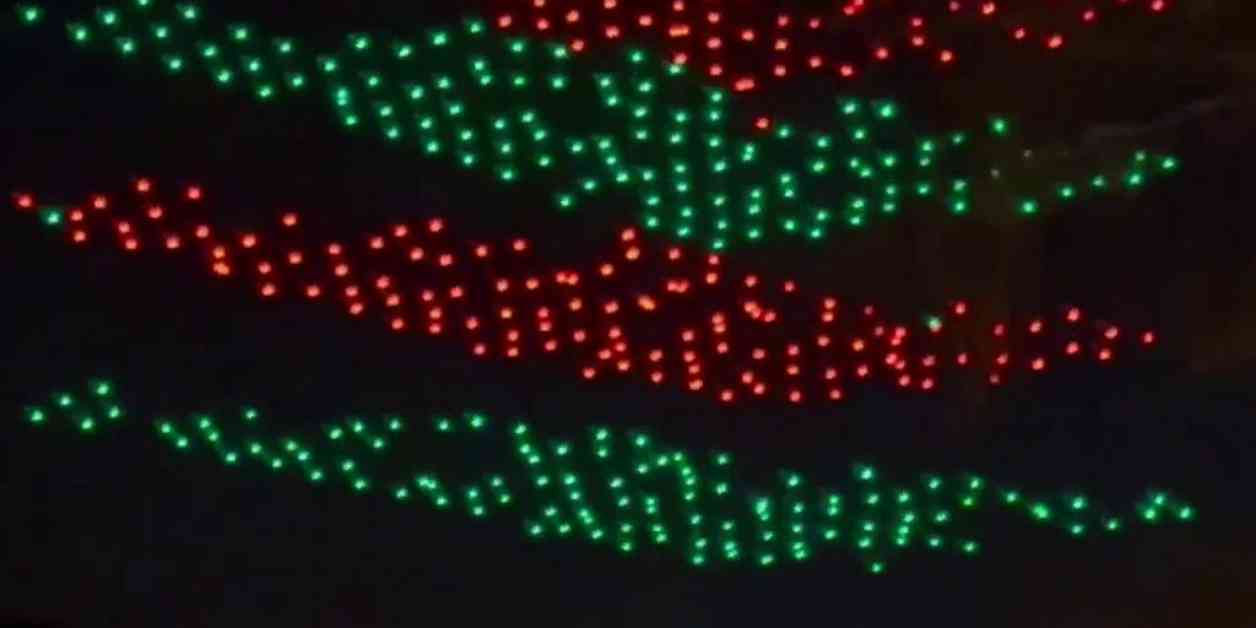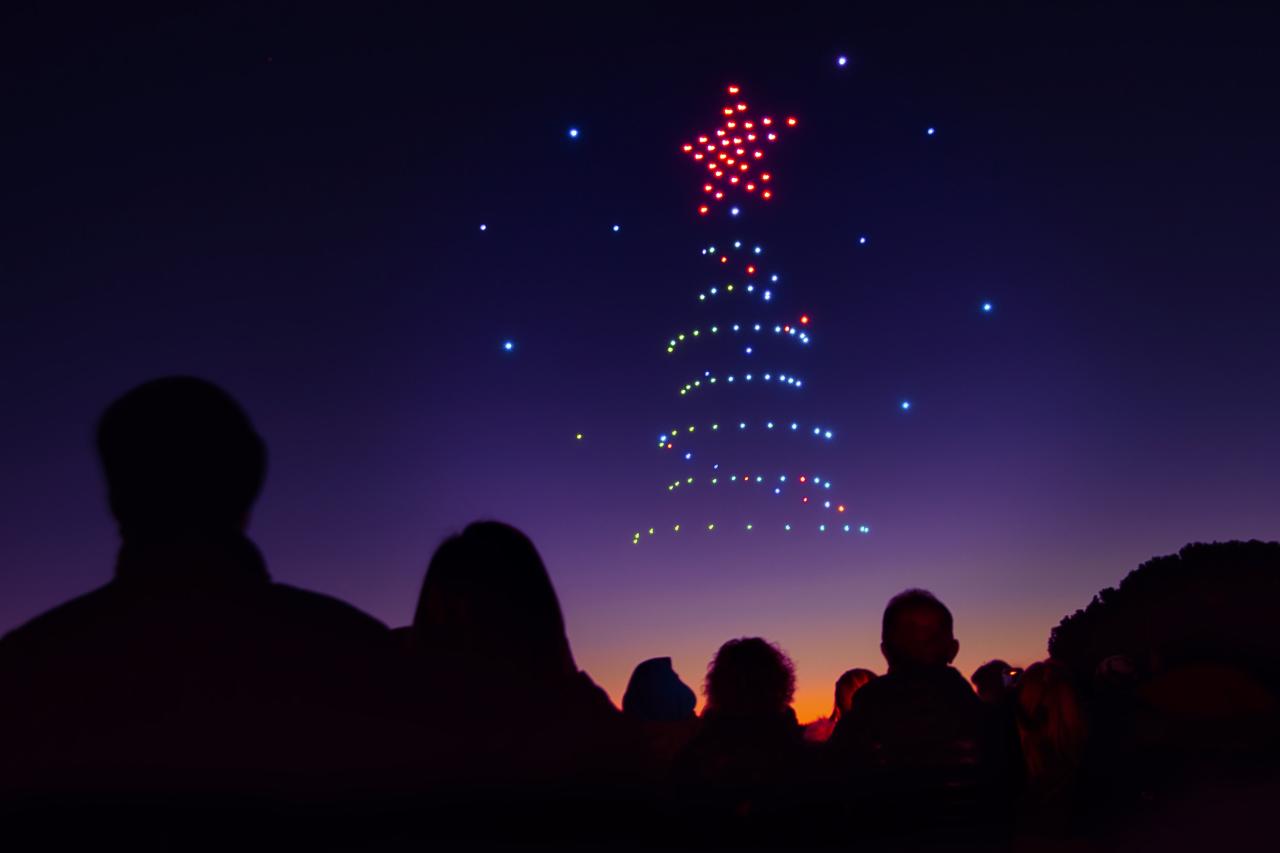Drone show accidents, while relatively infrequent, highlight the inherent risks associated with this increasingly popular form of entertainment. This analysis delves into the multifaceted nature of these incidents, exploring the contributing factors, safety protocols, technological advancements, and public perception surrounding them. We examine various types of accidents, from minor malfunctions to catastrophic failures, and investigate the crucial role of pilot training, regulatory compliance, and technological innovation in mitigating future risks.
The increasing sophistication and widespread use of drones in spectacular aerial displays necessitate a thorough understanding of potential hazards. This exploration covers existing safety regulations, innovative technological solutions, and effective risk management strategies, aiming to provide a comprehensive overview of the current state of drone show safety and future directions for enhanced security.
Drone Show Accidents: A Comprehensive Analysis

Drone light shows, while captivating, carry inherent risks. Accidents, though infrequent, can range from minor malfunctions to catastrophic failures. Understanding the types of accidents, implementing robust safety protocols, and leveraging technological advancements are crucial for ensuring the continued growth and safety of this exciting entertainment sector.
Types of Drone Show Accidents and Their Causes
Drone show accidents stem from various factors, broadly categorized by severity and the type of drone failure. These failures can be broadly classified as software glitches, hardware malfunctions, and operator error, each contributing to different accident scenarios.
| Type of Accident | Cause | Potential Consequences | Severity |
|---|---|---|---|
| Minor Malfunction | Software glitch, minor battery issue | Brief interruption in the show, minor damage to a single drone | Low |
| Major Crash | Loss of GPS signal, major hardware failure, collision | Multiple drone crashes, significant damage, potential property damage | Medium to High |
| Injuries | Falling drone, uncontrolled descent, operator error | Physical injuries to spectators or personnel | High |
| Fire | Battery failure, short circuit | Drone fire, potential property damage, risk of injury | High |
Comparing different failure types reveals that software glitches often lead to minor malfunctions, while hardware failures (like motor or battery issues) can result in major crashes or fires. Operator error, encompassing poor pre-flight checks or inadequate pilot training, significantly increases the likelihood of any type of accident.
Safety Protocols and Regulations for Drone Shows
Stringent safety regulations and protocols are essential to mitigate risks. These encompass pre-flight checks, pilot training, and emergency response plans.
- Comprehensive Pre-flight Checks: Thorough inspections of each drone, including battery levels, motor functionality, and GPS signal strength, are paramount.
- Pilot Training and Certification: Pilots should possess extensive training and certifications, demonstrating proficiency in drone operation and emergency procedures.
- Redundancy Systems: Incorporating backup systems, such as redundant power sources or flight controllers, minimizes the impact of single-point failures.
- Emergency Response Plan: A detailed plan for handling emergencies, including communication protocols and procedures for recovering crashed drones, is crucial.
A comprehensive checklist encompassing all these elements should be followed meticulously by every drone show operator to ensure adherence to safety standards.
Technological Advancements in Drone Show Safety, Drone show accident
Technological advancements play a pivotal role in enhancing drone show safety. Autonomous flight systems, GPS technology, and sensor integration are key advancements.
- Autonomous Flight Systems: These systems enable precise, pre-programmed flight paths, reducing the likelihood of human error.
- GPS and Sensor Technologies: Real-time GPS tracking and sensor data (such as altitude and proximity sensors) provide crucial information, enabling immediate responses to potential hazards.
- Redundancy Systems: Multiple independent systems working in parallel ensure that a single point of failure does not bring down the entire show.
- Advanced Communication Systems: Reliable communication between drones and the ground control station is vital for real-time monitoring and control.
The integration of these technologies significantly improves the safety and reliability of drone shows.
Case Studies of Drone Show Accidents

Analyzing past accidents provides valuable insights for future safety improvements. While specific details of accidents are often confidential, general patterns emerge.
- Incident 1 (Hypothetical): A power surge during a large-scale show caused multiple drones to lose control, resulting in several minor crashes and a brief show interruption. The incident highlighted the need for robust power management systems and redundancy.
- Incident 2 (Hypothetical): A software glitch caused a cascade effect, leading to a complete system failure and the grounding of all drones mid-show. This case underscored the critical importance of thorough software testing and fail-safe mechanisms.
These hypothetical scenarios illustrate the diverse range of issues that can arise and the need for ongoing improvement in safety protocols and technological solutions.
Public Perception and Risk Management

Public perception of drone shows is significantly impacted by accidents. Effective communication strategies are essential to manage public concerns.
- Transparent Communication: Openly communicating about accidents, their causes, and the steps taken to prevent future occurrences builds public trust.
- Risk Assessment and Mitigation: Proactive risk assessment and transparent communication about mitigation strategies are crucial.
- Public Education Campaigns: Educating the public about safety measures and the low probability of serious incidents helps to alleviate concerns.
A well-defined public relations plan is essential to address concerns and restore confidence after an accident.
Recent drone show accidents highlight the potential risks associated with large-scale drone operations. The precision required for these displays is immense, a stark contrast to the seemingly chaotic nature of events like the kazan drone attack , which underscores the need for robust safety protocols and thorough risk assessments in both civilian and military drone applications. Ultimately, preventing future drone show mishaps relies on improved technology and stringent regulations.
Future of Drone Show Safety
The future of drone show safety hinges on continued technological innovation and robust regulatory frameworks. AI and advanced sensor technologies are poised to play significant roles.
Recent drone show accidents highlight the inherent risks involved in these spectacular displays. To understand the complexities of safety protocols, it’s helpful to examine successful events like those showcased at a florida drone show , where meticulous planning and execution are crucial. Ultimately, the goal is to prevent future accidents and ensure the continued enjoyment of these breathtaking performances.
- AI-Powered Predictive Maintenance: AI algorithms can analyze drone data to predict potential failures, allowing for proactive maintenance.
- Advanced Obstacle Avoidance Systems: Sophisticated sensor systems and AI will enable drones to autonomously navigate complex environments, avoiding collisions.
- Improved Communication Networks: More reliable and robust communication networks will enhance real-time monitoring and control.
Over the next 5-10 years, we can expect significant advancements in these areas, leading to safer and more spectacular drone shows.
Ultimately, ensuring the safety and continued success of drone shows requires a collaborative effort. This includes stringent adherence to safety regulations, continuous improvement in drone technology, robust pilot training programs, and proactive public communication about inherent risks and mitigation strategies. By learning from past incidents and embracing technological advancements, the industry can strive towards a future where drone shows remain a captivating spectacle without compromising public safety.
FAQ Resource
What is the most common cause of drone show accidents?
Drone show accidents, while rare, highlight the complexities of coordinating numerous unmanned aerial vehicles. A recent incident serves as a stark reminder; the details surrounding the orlando drone show malfunction are still emerging, but it underscores the need for robust safety protocols and meticulous planning to prevent future mishaps. Ultimately, such incidents emphasize the importance of continuous improvement in drone show technology and operation.
While various factors contribute, software glitches, battery failures, and pilot error frequently feature prominently in drone show accidents.
Are there insurance policies specifically for drone show accidents?
Yes, many insurance providers offer specialized coverage for drone operators, including liability for accidents during drone shows. Coverage details vary depending on the insurer and the specifics of the show.
What is the role of airspace management in preventing drone show accidents?
Effective airspace management, including coordinating with air traffic control and establishing designated flight zones, is crucial to prevent collisions and ensure the safety of both drones and other aircraft.
How are drone show accidents investigated?
Investigations typically involve analyzing flight data, examining the drones for mechanical failures, interviewing witnesses, and reviewing the operator’s adherence to safety protocols. Depending on the severity, regulatory bodies may also be involved.
